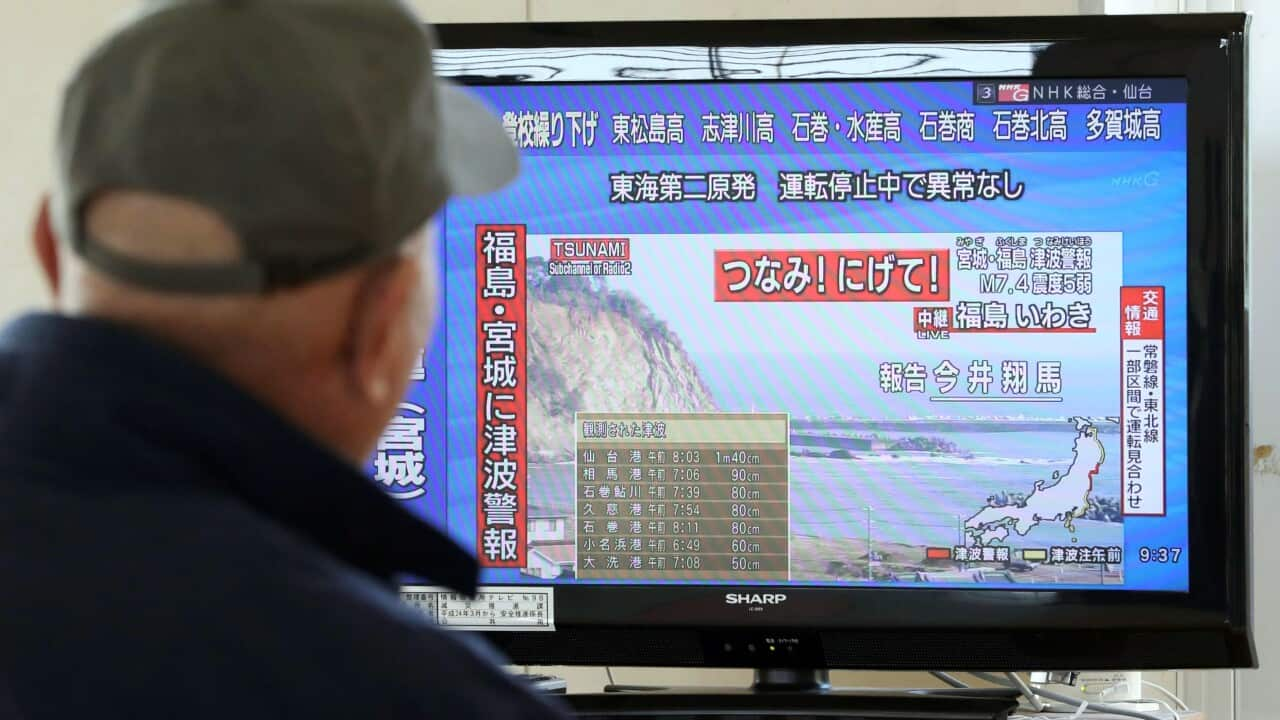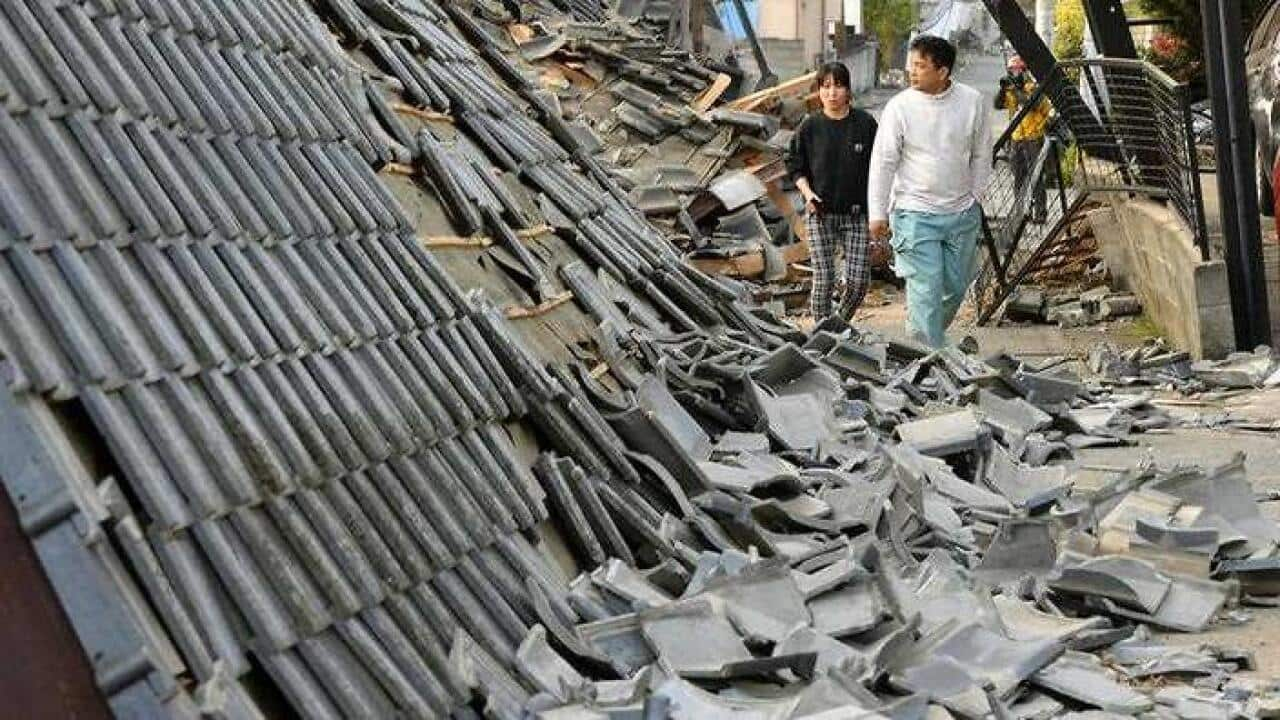The Ring of Fire is a highly seismically active zone of frequent earthquakes and volcanic eruptions surrounding the Pacific Ocean.
While its name suggests it to be a circle, the Ring of Fire, which extends for 40,000 kilometres and includes 452 volcanoes, is shaped more like a horseshoe.
Around 90 per cent of the world's earthquakes occur within the belt.
The arc stretches from the southern tip of South America, up and along the coast of North America, across the Bering Strait and down through Japan and then south to New Zealand.
Associate Professor Mark Quigley, who specialises in earthquake science at Melbourne University, told SBS News the Ring of Fire got its name from the volcanic activity around the Pacific plate boundary.
"The Pacific plate is subducting," he said.
related reading

Tsunami warning downgraded after strong quake near Fukushima
"It’s old, cold, ocean crust, so it’s quite dense and heavy. When it counters other tectonic plates, it has the tendency to sink.
"It sinks down and melts in the mantle and the product of that melt rise up through the crust, that magma, and they erupt in volcanoes."
Most of the active volcanoes are found in the Ring of Fire's western edge through the islands of Japan and south east Asia to New Zealand.
Professor Quigley said this meant Japan was more likely to be affected by earthquakes than other countries that sat on the arc.
"There’s giant subductions there so the size of a fault dictates the size of the earthquake," he said.
Japan sits atop the Ring of Fire and has more than 100 volcanoes and Professor Quigley said this was because of the activity of the Pacific plate.
"The Pacific plate is moving towards Japan every year, so it’s subducting and melting and that’s the source of those volcanoes," he said.
Professor Quigley said the biggest earthquakes in the world had occurred around the Ring of Fire.
"There was an earthquake in the 60s in Chile, a magnitude 9.5 - that’s the biggest earthquake we've ever had," he said.
"But in recent times, the 2011 Tohoku earthquake in Japan was on that the plate boundary."
So if we know where earthquakes are likely to occur, can scientists predict when they will occur?
Not yet, Professor Quigley said.
"We're not at the stage where we can give precise time information at the resolution that would be useful for evacuations and so on," he said.
Share




